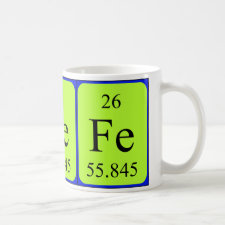
Authors: Karabörk M, Ersöz A, Birlik E, Say R
Article Title: Preconcentration of Fe(III) Using Fe(III)-Ion Imprinted Polymeric Traps and Its Analytical Performance for FAAS.
Publication date: 2007
Journal: Hacettepe Journal of Biology and Chemistry
Volume: 35
Issue: (2)
Page numbers: 135-142.
Alternative URL: http://www.hjbc.hacettepe.edu.tr/article/35/2/135
Abstract: Novel Fe(III)-imprinted beads were prepared by molecular imprinting technique for selective solid-phase extraction (SPE) of Fe(III) ions prior to its determination by flame atomic absorption spectrometry (FAAS). The functional metalcomplexing monomer and crosslinking monomer used were methacrylamidoantipyrine (MAAP) and ethyleneglycol dimethacrylate (EGDMA), respectively. MAAP was synthesized using methacryloylchloride, 4-aminoantipyrine and pyridine. Fe(III) ions were complexed with MAAP and the Fe(III)-imprinted poly(MAAP-EGDMA) beads were synthesized by suspension polymerization. After that, the template ions (i.e., Fe(III) ions) were removed using 4.0 M HNO3 solution. The specific surface area of the Fe(III)-imprinted and non-imprinted poly(MAAP-EGDMA) beads was found to be 1181.45 m2/g and 437.94 m2/g, respectively. The swelling ratio was 60% and 47% for imprinted and non-imprinted beads, respectively. According to the elemental analysis results, the beads contained 119.0 μmol MAAP/g polymer. The maximum adsorption capacity, optimum pH and equilibrium binding time were 29.32 mg/g, 4.0 and 80 min, respectively. Selectivity coefficients for Al(III), Cu(II), Zn(II) and Co(II) ions were compared with Fe(III) ion. Fe(III)-imprinted beads showed the following order of metal ion affinity: Fe(III)>Zn(II)>Cu(II)>Co(II)>Al(III). The Fe(III)-imprinted poly(MAAP-EGDMA) beads could be used many times without decreasing their adsorption capacities significantly.
Template and target information: iron ions, ferric ion, Fe(III)
Author keywords: Ion imprinting (IIP), FAAS, Fe(III) ion, preconcentration, solid phase extraction



Join the Society for Molecular Imprinting

New items RSS feed
Sign-up for e-mail updates:
Choose between receiving an occasional newsletter or more frequent e-mail alerts.
Click here to go to the sign-up page.
Is your name elemental or peptidic? Enter your name and find out by clicking either of the buttons below!
Other products you may like:
 MIPdatabase
MIPdatabase









